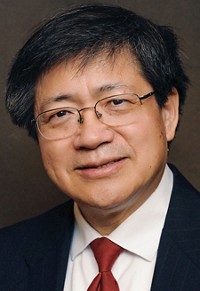Advertisement
Grab your lab coat. Let's get started
Welcome!
Welcome!
Create an account below to get 6 C&EN articles per month, receive newsletters and more - all free.
It seems this is your first time logging in online. Please enter the following information to continue.
As an ACS member you automatically get access to this site. All we need is few more details to create your reading experience.
Not you? Sign in with a different account.
Not you? Sign in with a different account.
ERROR 1
ERROR 1
ERROR 2
ERROR 2
ERROR 2
ERROR 2
ERROR 2
Password and Confirm password must match.
If you have an ACS member number, please enter it here so we can link this account to your membership. (optional)
ERROR 2
ACS values your privacy. By submitting your information, you are gaining access to C&EN and subscribing to our weekly newsletter. We use the information you provide to make your reading experience better, and we will never sell your data to third party members.
Environment
Cyber-enabled Chemistry
by Arthur B. Ellis and Sangtae Kim
March 14, 2005
| A version of this story appeared in
Volume 83, Issue 11
This guest editorial is by Arthur B. Ellis and Sangtae Kim, directors of the National Science Foundation's Divisions of Chemistry and of Shared Cyberinfrastructure, respectively. Views expressed are those of the authors and do not necessarily reflect the views of NSF.
It is rare that a technological development can simultaneously address three NSF objectives: advancing the frontiers of discovery, integrating research and education, and broadening participation. However, there is considerable evidence that cyberinfrastructure (CI) is such a development. As noted by the NSF Blue-Ribbon Advisory Panel on Cyberinfrastructure (http://www.cise.nsf.gov/sci/reports/atkins.pdf), CI is changing scientific and engineering research and education by revolutionizing what individuals, teams, and organizations do, and how they do it. One of our responsibilities at NSF is to ensure that our community can take full advantage of CI. We believe that cyber-enabled chemistry has the potential to be transformational. Realizing this potential is a challenge that will require our collective energy and talent.
To better understand the implications of CI for the chemical sciences community, the Divisions of Chemistry and of Shared Cyberinfrastructure cosponsored a workshop in October 2004. The workshop report was recently posted at http://bioeng.berkeley.edu/faculty/cyber_workshop. During the workshop, participants noted that existing CI is already creating new chemical research and education paradigms through grid computing, community databases, remote access to instrumentation, electronic support for geographically dispersed collaborations, and other Web- and grid-accessible services.
Advances in CI in areas such as scientific portals, workflow management, computational modeling, and data and molecular visualization will clearly impact the day-to-day practice of chemistry. These advances will make it possible to work productively with chemical systems of unprecedented complexity--systems that span multiple scales of length, time, and organization, and involve voluminous quantities of data. CI can be used to inform synthetic efforts and to permit experimental measurements to be modified in real time. Moreover, the access to expertise and resources that CI provides holds the potential for individuals to collaborate with anyone, anywhere, anytime. CI promises to broaden participation in the chemical sciences to create a truly inclusive national and international community.
Workshop participants explored how CI can enable basic research and education in the chemical sciences, as well as how to educate our workforce to use and benefit from CI. Attendees identified key scientific challenges across chemistry's subdisciplines and at the interface with other disciplines where cyber-enabled chemistry will be essential. Examples included the design of drugs, catalysts, and functional materials; the influence of complex environments on chemical reactions; the rules for self-assembly; the chemistry of electronically excited states; and the complex chemistry of Earth. Participants spoke eloquently of the potential for cyber-enabled chemistry to provide an "unbounded chemical sciences landscape in which different disciplines, computational and experimental methods, institutions, geographical areas, levels of user sophistication and specialization, and subdisciplines within chemistry are bridged" by CI tools.
The workshop report suggests that NSF's investments in cyber-enabled chemistry focus on the chemical science drivers to be served and on mechanisms for facilitating the integration of research and education so as to prepare our future workforce appropriately. Many program announcements for instrumentation and multi-investigator projects encourage CI connections (http://www.nsf.gov/mps/divisions/<br > che/news/c_notices.htm#program). We will also encourage proposers to our core programs, which support many individual investigator awards, to consider innovative ways to "cyber-enhance" their projects, either by using existing CI tools or by developing new ones.
At NSF, we review proposals using two criteria: intellectual merit and broader impacts. Cyber-enabled chemistry is intrinsically a broader impact of the basic research and education that we support, and it adds considerable value to this investment. We look forward to working with the chemical sciences community to make the transformational potential of cyber-enabled chemistry a reality. We welcome your thoughts. Please write to us at chemplans@nsf.gov.
National Science Foundation





Join the conversation
Contact the reporter
Submit a Letter to the Editor for publication
Engage with us on Twitter